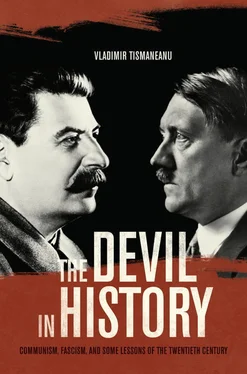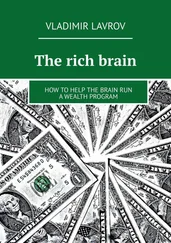Marxism failed in the twentieth century because it underestimated the existential quandaries of human existence, the needs of many for deep spiritual or cultural sources of meaning, and thus the profound importance of the human right to privacy. It aimed to create a perfect society whose materialization in the Communist experiments, from Moscow to Phnom Penh, came closer to Kafka’s penal colony than to the paradisiacal visions of traditional utopians. 108The myth of a singular world proletarian revolution has long since been dispelled. It was not this myth, however, that made Communism such a poignantly seductive ideology. More important was the promise of universal transformation, the promise that this miserable Vale of Tears will be replaced by an Arcadian world in which all individuals will be happy and free.
From the Eleventh Thesis on Feuerbach to the last line of the Manifesto , Marx issued a persistent call to mobilize understanding and harness the forces of modernity, all in the name of a radical transformation of the world, a reconciliation of man with nature and history. Such a totalizing vision no doubt possesses great intellectual and moral appeal. But if we have learned anything from the past century, it is that the domain of morality and politics is a domain of finitude, difference, and limit. The riddles of history have no final solutions worth seeking. Like Germans after Hitler, like Italians after Mussolini, like Chileans after Pinochet, East Europeans have engaged in efforts to reckon with a traumatic past. This necessarily involves analyses of the ideological blueprints that galvanized murderous political passions, catalyzed mass resentment, and organized nihilistic social energies in disastrous forms of social engineering. 109When living for almost a century in the company of the Devil, one cannot anymore find refuge in angelic reverence. The reconciliation and healing of a nation besmirched by the bloody mire of evil depend on the recognition and non-negotiability of human dignity as a primordial moral truth of the new society.
CHAPTER 6
Malaise and Resentment
Threats to Democracy in Post-Communist Societies
Societies produce stereotypes (which are the height of artifice), and then consume them as commonplace (which is the height of naturalness). That is how bad faith can pass for good conscience.
—Eugen Weber,
My France
…shared hatreds make for strange bedfellowships.
—Albert Hirschman,
The Rhetoric of Reaction
Turning and turning in the widening gyre
The falcon cannot hear the falconer;
Things fall apart; the centre cannot hold;
Mere anarchy is loosed upon the world,
The blood-dimmed tide is loosed, and everywhere
The ceremony of innocence is drowned;
The best lack all conviction, while the worst
Are full of passionate intensity.
—W. B. Yeats,
The Second Coming
The over two decades that have passed since the collapse of Communist regimes in Central and Eastern Europe have proved that more than one possible future could be reasonably canvassed for the region. Even when many hastened to predict the worst, the likelihood of nightmarish scenarios, pace Jan Urban or G. M. Tamás, was somewhat dubious. 1 Bellum omnium contra omnes , a state of wild and protracted anarchy, and the loss of recently acquired civic rights in favor of Stalino-Fascist simulations of cohesion and collective will are not in the offing in most post-Leninist states. The Milosevic- style expansionist chauvinism has not been emulated outside the borders of the former Yugoslavia, although similar outbursts of hatred and intolerance have accompanied the breakdown of the Soviet Union, especially in the Caucasus. Human rights have been trampled in Belarus under the plebiscitary regime headed by Alexander Lukashenko, but this remains rather an exceptional case among European post-Communist states. Pluralism seems to have settled solidly, and democratic procedures are now widely recognized, accepted, and practiced. The general landscape after Communism’s demise, however, is one of disenchantment, dispirited political cultures, the rise of new collectivisms, marginalization of former heroes, and the return of the former Communists. Adam Michnik’s term for this trend was “the velvet restoration.” 2I proposed the “velvet counterrevolution” to indicate the direction of this phenomenon, especially its strong anti-intellectual and illiberal tendencies. 3The conservative-populist turn in Hungarian politics under Prime Minister Viktor Orbán after 2009 has resulted in bitter controversies regarding perceived limitations to freedom of the press and ethnocentric approaches to the nature of national identity.
Central and Eastern European societies have evolved from authoritarian, extremely centralized, and bureaucratic Leninist regimes toward democratic forms of political and economic organization. 4To focus exclusively on their difficulties during the transition period is to miss the drama of social and political experimentation in that region. More than twenty years after 1989, what remains at stake is the validity of the liberal democratic paradigm in traditionally authoritarian societies (“What can they look back to?” historian Tony Judt once asked, correctly). In other words, it is important to identify the building blocks on which open societies can be established in order to function properly. We must assess the trajectory of the great transformations unleashed by the extraordinary events of 1989: Are the newly awakened societies propitious to pluralism, or does the upper hand belong to illiberal, antimodern forces? In 2002, Judt stated that, in the context of the European Union accession, for purposes of European moral reconstruction, “the crucial reference point for Europe now will be the years immediately preceding the events of 1989.” 5As we celebrated the twentieth anniversary of that year’s revolutions, we have the possibility of contemplating the first two post-Communist decades’ illusions, expectations, and balance sheet and of speculating on the years to come.
The revolutions of 1989 were, no matter how one judges them, truly world-historical events, in the Hegelian sense: they established a historical cleavage (only to some extent conventional) between the world before and after 1989. 6The Leninist systems were terminally sick, and the disease affected first and foremost their capacity for self-regeneration. After decades of toying with the idea of intrasystemic reforms, it had become clear that Communism did not have resources for readjustment and that the solution lay not within but outside, even against, the existing order. 7The demise (implosion) of the Soviet Union, consummated before the incredulous eyes of the world in December 1991, was directly and intimately related to the earlier dissolution of the East European “outer empire,” provoked by the revolutions of 1989. It is now obvious that the historical cycle inaugurated by World War I, the Bolshevik seizure of power in Russia in October 1917, and the long European ideological warfare (or rather global civil war) that followed had come to an end. 8
The road to 1989-91 was prepared by the less visible, often marginal, but in the long run critically significant workings of what we now call civil society (including Solidarity in Poland, Charter 77 in Czechoslovakia, unofficial peace, environmental, and human rights groups in the GDR, Democratic Opposition in Hungary). 9In examining the wreckage of Leninism, we should thus avoid any one-dimensional, monistic approach. There is no single factor that explains the collapse: economics as much as politics and culture as much as insoluble social tensions converged in making these regimes irretrievably obsolete. But these were not autocracies: they derived their only claim to legitimacy from the Marxist-Leninist “holy writ,” and once this ideological aura ceased to function, the whole edifice started to falter. 10They were, to use sociologist Daniel Chirot’s apt term, “tyrannies of certitude,” and it was precisely the gradual loss of ideological commitment among the ruling elites, once a truly messianic ardor, that accelerated the inner disintegration of Leninist regimes. 11By 1989, three central myths of Leninism had collapsed: its infallibility, its invincibility, and its irreversibility.
Читать дальше












